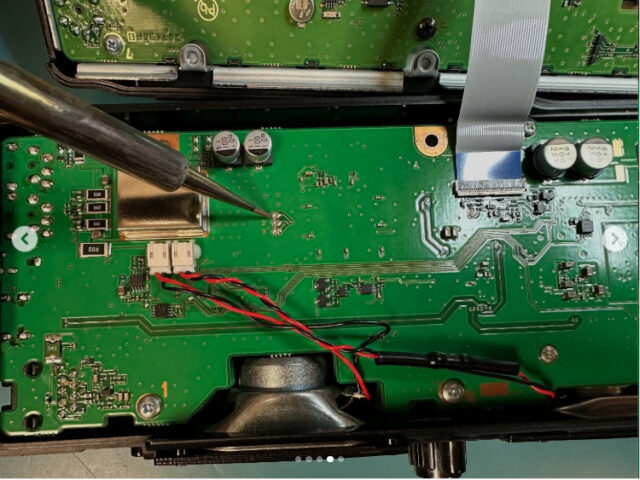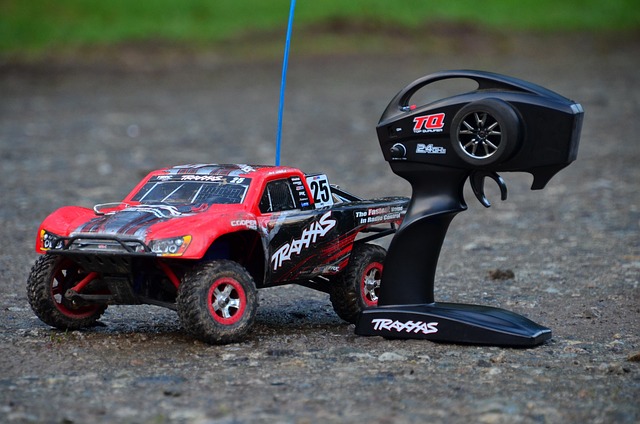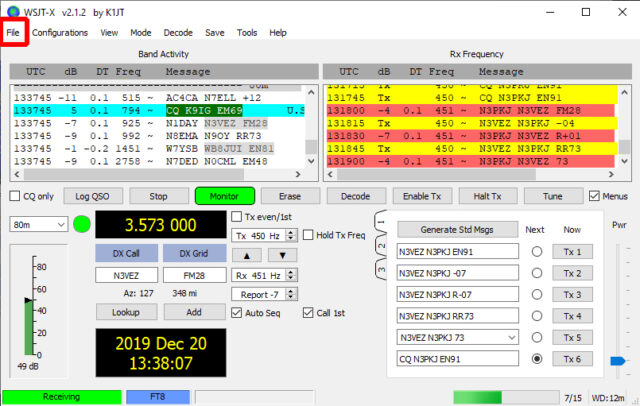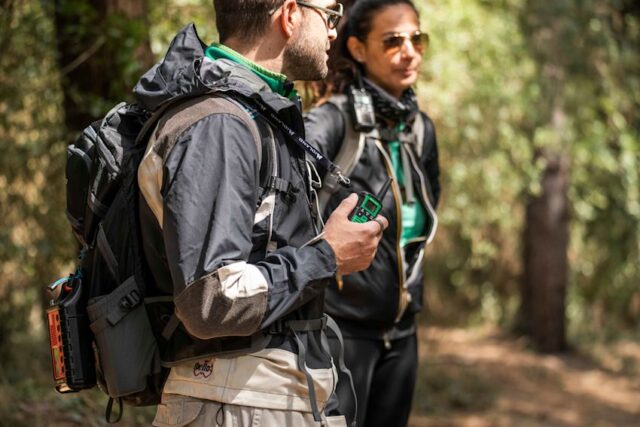The Yaesu FTX-1 series is a compact and versatile transceiver designed primarily for amateur radio use. Out of the box, it is intentionally restricted to transmit only within the legally assigned amateur bands. These limitations are not flaws but safeguards, ensuring compliance with national and international regulations. However, many amateur operators quickly learn about the so-called MARS/CAP modification—a procedure that can dramatically expand the transmit range of the radio.
For some, this is simply a technical curiosity. For others, it is a way to prepare equipment for emergency scenarios. And for a small group of licensed participants in official programs, it is a requirement. Regardless of motivation, understanding what the MARS mod is—and what it is not—is essential before reaching for a soldering iron.
UPDATE:
Step-by-Step Modification Procedure
Here is the documented process for the Yaesu FTX-1 series:
-
Disconnect all power sources, including the battery.
-
Remove the three black screws on the bottom speaker cover and take off the cover.
-
Under the cover, remove the three hidden silver screws.
-
On the back, remove the three top black screws to free the front unit.
-
Carefully separate the front unit from the RF unit.
-
Locate Jumper 1 on the mainboard and short it with a solder bridge. This activates MARS/CAP mode.
-
Reassemble the radio by putting the units and screws back in place.
-
Perform a factory reset to initialize the new configuration.
At first glance, this looks like a routine hardware tweak. In practice, it requires careful handling: one misplaced solder blob on a modern PCB can destroy the device. This is why seasoned hams often remind newcomers that “easy on paper” does not always mean “easy in practice.”
What Exactly Is the MARS Mod?
The term “MARS mod” originates from the Military Auxiliary Radio System (MARS) in the United States. MARS is a military support network that has existed since the 1950s, bridging civilian amateur operators with military communication needs. Alongside it is the Civil Air Patrol (CAP), which also uses radio equipment on frequencies close to the amateur bands.
Both organizations required radios that could transmit outside traditional ham allocations. Manufacturers responded by building hidden “switches” into their designs—jumpers, diodes, or firmware flags—that authorized service technicians to expand frequency coverage when necessary. Over time, hams discovered these hidden features, and the phrase “MARS mod” entered the community’s vocabulary to describe any unlocking of a radio’s transmit range.
Why Do Amateurs Perform This Modification?
The motivations vary widely.
-
Flexibility in emergencies – Some believe that in a disaster scenario, being able to transmit on a broader range of frequencies could help coordinate rescue efforts.
-
Operating abroad – Band allocations differ worldwide. A European ham visiting the U.S., or vice versa, may be tempted to expand their radio for compatibility.
-
Experimentation and curiosity – Amateur radio has always attracted tinkerers. Many simply want to understand how the manufacturers impose restrictions and how they can be lifted.
-
Participation in MARS or CAP – In the U.S., licensed operators in these programs legitimately require unlocked radios.
It is important to stress, however, that most of these motivations are not legally sufficient. Owning an unlocked radio does not grant permission to use it outside amateur bands.
How Manufacturers Implement Frequency Locks
Why can’t radios just transmit everywhere by default? The answer lies in regulation and liability. Manufacturers face strict certification standards (FCC in the U.S., CE in Europe, etc.) that require radios to stay within certain ranges.
To enforce this, companies use different methods:
-
Hardware jumpers or wires – early Alinco models could be unlocked simply by cutting or connecting a colored wire.
-
Keypad sequences – some Yaesu handhelds only required entering a hidden service menu.
-
PCB solder bridges – modern units like the FTX-1 rely on small solder pads that must be shorted or opened.
-
SMD diode matrices – advanced models (like the Icom IC-7300) use microscopic diode grids to configure regions, demanding expert soldering skills.
-
Software locks – increasingly, radios rely on firmware flags, accessible only through service software or hidden menus.
Each method balances ease of service with difficulty of tampering, but hams usually find a way.
Hardware vs. Software MARS Mods
-
Hardware mods are physical, often irreversible, and demand steady hands. They might involve cutting a trace, bridging a pad, or replacing components. Mistakes can be fatal for the device.
-
Software mods rely on service tools, programming cables, or firmware patches. These are less invasive but can still brick the radio if done incorrectly.
The Yaesu FTX-1 specifically uses a hardware jumper method, making it a classic example of a hands-on modification.
Examples of Popular Radios with MARS Mods
-
Yaesu FT-857 and FT-891 – both allow for solder pad modifications to expand frequency coverage.
-
Icom IC-7300 – relies on reconfiguring a diode matrix, a delicate operation.
-
Kenwood TS-2000 – capable of wideband operation with the right changes.
-
Baofeng UV-5R – infamous for its ability to transmit almost anywhere once programmed with free software like CHIRP.
Each case highlights a tension between user demand for flexibility and the manufacturer’s responsibility to limit misuse.
Legal and Ethical Considerations
A key truth must be repeated: performing the mod does not make it legal to use.
-
Internationally, the ITU defines band plans.
-
In the U.S., the FCC enforces strict rules.
Transmitting outside authorized bands can result in fines, equipment confiscation, or even license revocation. Beyond legality lies the ethical dimension: should hams knowingly risk interfering with emergency services? Should technical curiosity outweigh potential harm?
Most responsible operators agree that receiving outside ham bands is fine, but transmitting is another matter entirely. The spirit of amateur radio—“self-training, intercommunication, and technical investigations”—does not include unlawful operation.
Tips for Safe Modification
If you do proceed, follow best practices:
-
Read service manuals and cross-check instructions on trusted forums.
-
Back up settings or firmware when possible.
-
Use proper tools: fine-tip soldering stations, magnification, and antistatic precautions.
-
Never test by blindly transmitting. Use dummy loads, SWR meters, and power meters.
-
Always remember: a mistake on the air affects not just you but the entire spectrum.
Frequently Asked Questions
Do I really need the MARS mod?
Only if you are an official MARS or CAP operator, or if you have a genuine technical reason. For most hams, it is unnecessary.
Will I lose my warranty?
Yes. Any disassembly or soldering voids manufacturer support.
Can I transmit on emergency or police channels?
No. Unauthorized transmission is illegal and dangerous.
Can the modification be reversed?
Software mods often can, hardware mods rarely can. Some involve permanent changes to the PCB.
Can I receive outside amateur bands without modding?
Yes. Most modern radios already have wide receive coverage without modification.
Will it improve performance?
Not necessarily. The radio is optimized for ham bands; outside them, efficiency drops and stress on components rises.
Historical Background
Since the 1950s, MARS has played an important role in bridging civilian and military communication. During the Cold War, MARS operators provided contingency networks across the U.S. In natural disasters, they became lifelines when other systems failed. Manufacturers quietly enabled MARS compatibility to ensure readiness, but always under official authorization.
By the 2000s, as firmware programming became widespread, modifications spread beyond their intended audience. Online forums and YouTube tutorials accelerated this trend. Today, even newcomers with little soldering experience can attempt mods—though often with disastrous results.
Future Outlook
The future of transceivers is increasingly software-defined (SDR). With SDRs, frequency ranges are no longer determined by jumpers but by firmware. While this makes unlocking easier, it also allows manufacturers to implement stronger protections. We may see:
-
Encrypted or key-based access to expanded ranges.
-
Remote disable features to prevent misuse.
-
More distinct separation between amateur and commercial equipment.
At the same time, SDR opens new frontiers for experimentation. Amateurs can study spectrum use in ways never before possible, as long as they respect legal boundaries.
Final Thoughts
Expanding the frequency range of a transceiver through a MARS mod is fascinating. It blends technical skill, curiosity, and a touch of rebellion against factory limits. But it also carries responsibility. A modified Yaesu FTX-1 is not a license to roam freely across the airwaves—it is a tool that must be used wisely.
For most hams, the real value of the mod is educational: learning how radios are designed, how restrictions are implemented, and how far modern hardware can be pushed. But always remember the golden rule of amateur radio: use your skills to advance knowledge and serve the community, never to cause harm.
Image(s) used in this article are either AI-generated or sourced from royalty-free platforms like Pixabay or Pexels.
Did you enjoy this article? Buy me a coffee!






